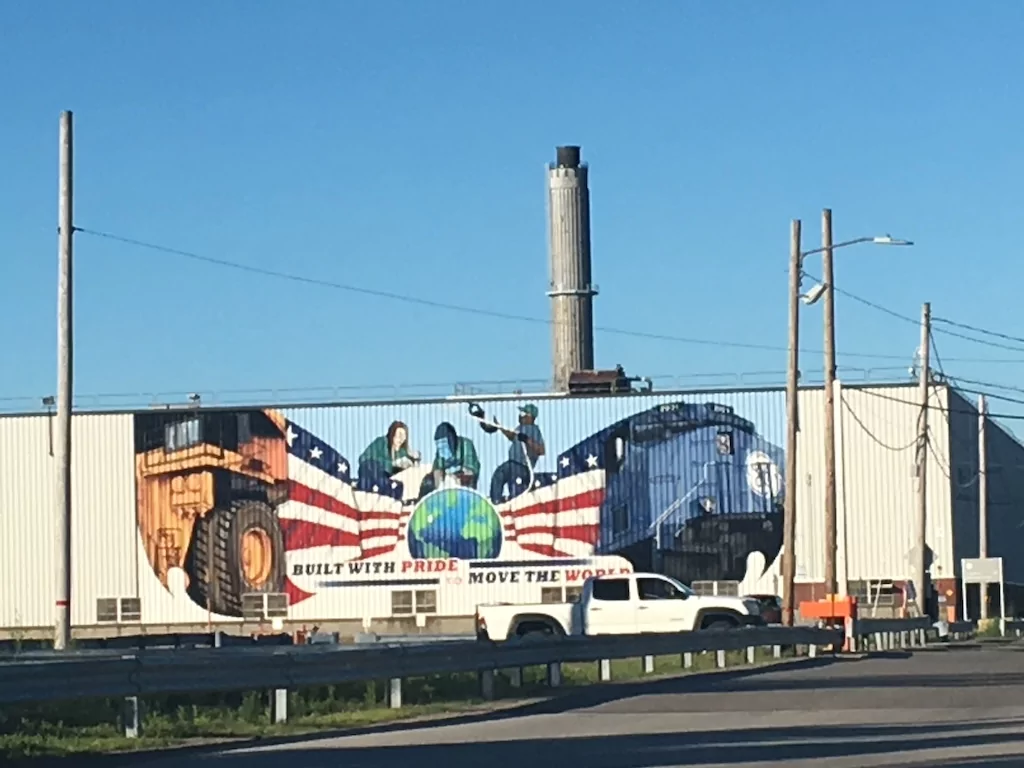ERIE, Pennsylvania — A handful of days after the end of summer, the warm weather is lingering, which makes you pine for Sara’s Restaurant to be open still as you enter Presque Isle State Park.
The restaurant, located next to Sara’s Campground, was bustling less than two weeks ago with locals, tourists, campers, and day trippers who stopped to grab one of the famous milkshakes, sit on the picnic benches with their families, and catch one last moment of the end of summer.

Erie sits on the furthest western tip of Pennsylvania along the Great Lake it is named for and within the county that shares its name. The city is solidly Democratic, but the county is largely conservative.
The coalition of voters here was part of the 10 counties in this country in the Great Lakes-Midwestern states of Pennsylvania, Ohio, Michigan, Wisconsin, and Iowa that were outlined in my book The Great Revolt: Inside the Populist Coalition Reshaping American Politics, co-written with OnMessage founder Brad Todd. It was about Democrats, Republicans, and independents who lived in counties that voted for Barack Obama twice but then voted for Donald Trump four years later.
They caught my attention here as I was reporting on the 2016 race, as well as in Macomb County, Michigan, Kenosha, Wisconsin, and other counties spread out in those five states, because of the coalition they were forming that was reshaping American politics.
From pragmatic evangelicals to traditional suburban Republicans to blue-collar New Deal Democrats to gun-owning college-educated women, all formed an alliance that had a lot to do with their lives, how our cultural curators dismiss them in corporations, academia, and the media, and their sense of place.
As Todd and I described in the book, what happened here, a county that had been voting Democratic for president for decades, was far from a fluke. Instead, it was a backlash against globalism, secularism, and coastal elitism.
Erie County is about to tell us in a handful of weeks whether it was Trump who was the fluke in 2016 or Joe Biden in 2020, when he narrowly won the county in an election year muddled by COVID-19, fear, isolation, and uncertainty.
Biden had just enough Scranton street cred to pick off some of the working-class voters who had migrated to the Republican Party in 2016. The question, as Trump heads here on Saturday, is if Vice President Kamala Harris possesses that same street cred to hold them? The answer is crucial because this is arguably the most important county, not just in Pennsylvania but in the entire country, for the November election.
Will the archetypes of the new conservative populist voter, many of whom broke ranks to back Trump in 2016, return to support him? We outlined several of them, which include low-propensity voters, silent suburban women, gun-owning college-educated women, evangelicals and conservative Catholics, blue-collar Democrats, and classic swing voters.
They were hidden in plain sight back then. Most reporters weren’t looking for them here in Erie. Why? Because Erie supposedly always votes for Democrats. How could they possibly vote for Trump? What they missed is that Trump didn’t cause this coalition. He was the result of it.
And the problem for Republicans, Democrats, and the press is they still haven’t figured that out. They still haven’t spent meaningful time in the county where every working-class child from Wheeling, West Virginia, Pittsburgh, and all throughout the Mahoning Valley in Ohio spent at least part of their summers at the beaches along Presque Isle.

Nor have they talked to people who farm the rolling fields throughout the county, tried the burgeoning wine industry, taken a deep dive into one of the largest settlements of refugees in the state and how they have been welcomed and assimilated into the culture, visited the sprawling universities, top-notch medical facilities, and insurance industries, or talked to the local manufacturing companies trying to stay afloat.
They have no idea that the poorest ZIP code in the state is in the heart of Erie and what that means to the community trying to find leadership to fix it. Nor do they understand the generational losses the county felt when the heavy manufacturing base that had built this Great Lakes port city collapsed.
The county has approximately 177,000 voters, of whom 96,000 are Democrats and 69,000 are Republicans, according to the latest Pennsylvania State Department records. One might conclude from this that it’s a sure bet for the Democrat to win. That is usually true, but not always. Since 1978, when the county received its home rule charter, there have been six county executives, two of whom were Republicans.

Erie is the ultimate bellwether in this state. On Thursday, you will find Republican Dave McCormick visiting with small businesses throughout the county, as well as speaking to the Shale Insight Conference along the Bayfront. The conference gathers people in the natural gas industry from all across the country to discuss the energy industry, fracking, and the uncertainty that plagues the industry thanks to a lack of pipelines to distribute liquefied natural gas and the export moratorium that the Biden-Harris administration has placed on LNG.
Trump will be here on Sunday. Aside from revisiting Butler, where he was shot in July, the following week, the visit here will likely be the most significant in terms of his message of how he will make voters’ lives better. He surely will say his policies will bring prosperity to their lives, and they will look for his pledge to close the border to stop the flow of fentanyl upending countless families.
The Republican vice presidential candidate, Sen. J.D. Vance (R-OH), was here last month. The Democratic vice presidential candidate, Gov. Tim Walz (D-MN), was also here. To date, Harris has not visited the county. Voters are looking for her to explain why they should take a chance on her, given that she is an extension of the Biden administration’s policies that have been unpopular here.
CLICK HERE TO READ MORE FROM THE WASHINGTON EXAMINER
The national press never stayed here long enough after 2016 to understand the conservative populist coalition that formed to place Trump in the White House and what mattered so much to them to take that chance. As I wrote in 2020, they didn’t stay here long enough to find out why Biden won, either — they were just relieved that Biden won.
It may turn out that Trump’s visit here on Sept. 29 will be the most important stop of his whole campaign. It could make all the difference as to whether he or Harris will be in the White House next January.
